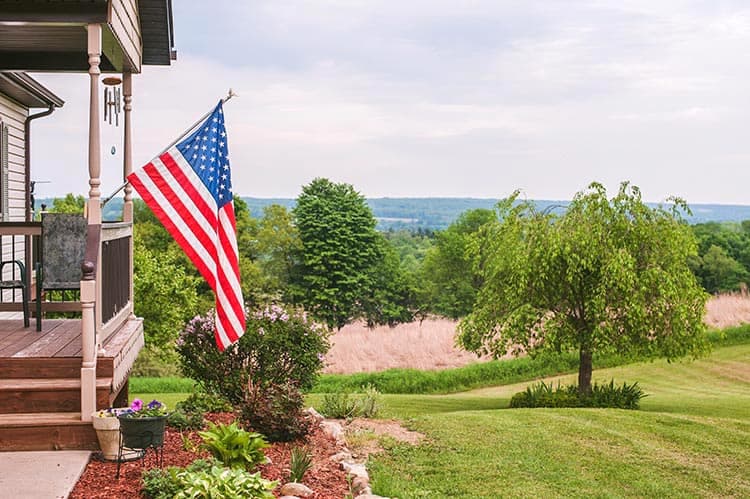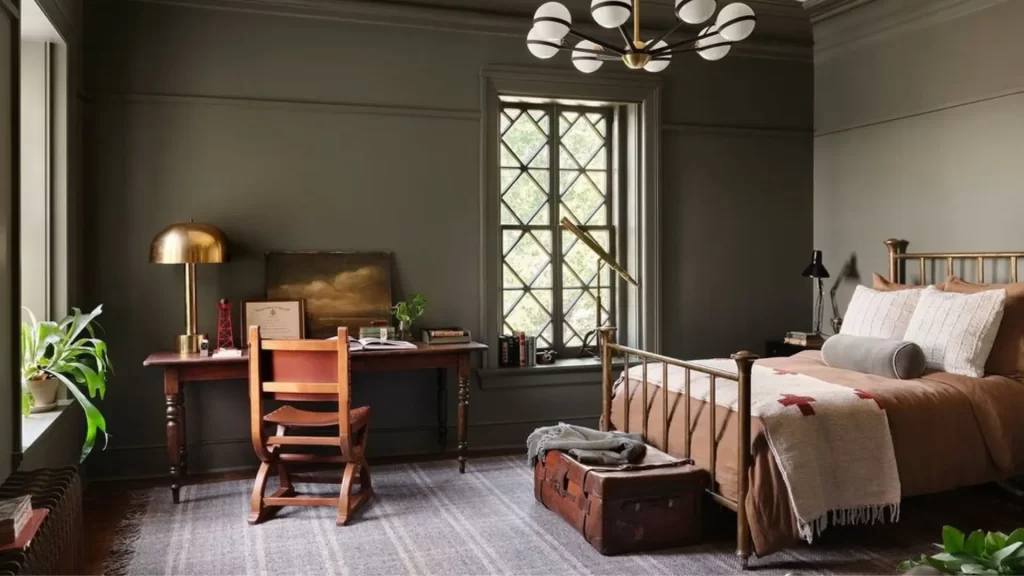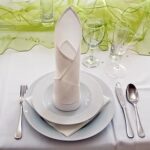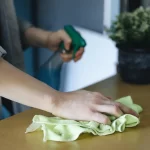The proper etiquette for displaying the U.S. flag to give Old Glory the respect she deserves
Standards for handling and displaying the American flag are set forth by the United States Code, written into law by Congress in 1942. This federal code does not impose penalties for improper handling or misuse of the flag, but states do have laws regarding this, and most of our fellow citizens expect the flag to be treated with respect.

The U.S. Code is more strict about some aspects of handling the flag than contemporary culture demands—it states, for example, that the flag should not be “printed or otherwise impressed on paper napkins or boxes or anything that is designed for temporary use and discard.” Our society has interpreted some of the rules rather loosely because we’re enthusiastic about displaying our national symbol. Nevertheless, some important rules of decorum should be followed.
Here are the basics:
Ideally, an American flag on your house should hang from a staff that angles out from the front wall or a windowsill or balcony. It’s a good idea to screw a bracket made for holding the flagstaff to the trim. Fasten it securely and so the flag won’t become soiled or damaged. Do not allow the flag to touch the ground, floor, water, or anything else beneath it. It’s also appropriate to hang the flag from a horizontal staff.
Whether the flag hangs from an angled or horizontal staff, be sure the union or canton (the rectangle with the stars) is at the peak. (Hanging the flag with the union down signals extreme distress.) When our President declares the flag to be flown at half-staff, it is acceptable to hang the flag from a horizontal staff with the union down, though most of your neighbors may not understand why you’re doing this.
When the flag is displayed either horizontally or vertically against a wall, the union should be at the top and to your left. When displayed in a window, the flag should be hung so that the union is on the left when you see it from the street.
The American flag is meant to be a flag; don’t use it for any other purpose. For example, don’t use it as drapery, a ceiling decoration, or as a bed spread. And never use it as a receptacle for carrying or holding anything.
Though it is customary to fly the flag from sunrise to sunset, the U.S. Code says that when a patriotic effect is desired, you can display it around the clock. If you do, you should illuminate it with a light.
If you display the American flag next to other flags or pennants, place it on the right side of a single flag or at the center of a group and slightly higher than the other flags. If an American flag is on the same staff as other flags, it should always be at the top. The gist is that other flags should not be in positions of greater prominence or honor.
When displayed from a car, the flagstaff should be fixed or clamped firmly to the vehicle, ideally on the right side. The flag should not be draped over the hood, top, sides, or back. The same holds true for a flag displayed on a float in a parade.
Don’t carry the flag flat or horizontally. And, because it is not meant to be apparel, do not wear a United States flag. If you wear a lapel flag, pin it on the left side, near your heart.
Why bother with flag etiquette when you’re enthusiastic about flying the Stars and Stripes? I figure that, for more than 200 years, our country’s military, firemen, police, and other service personnel have practiced these measures faithfully, treating our flag with the highest esteem. This is one way we can meet the high standard they have set.






 Don Vandervort writes or edits every article at HomeTips. Don has:
Don Vandervort writes or edits every article at HomeTips. Don has:




